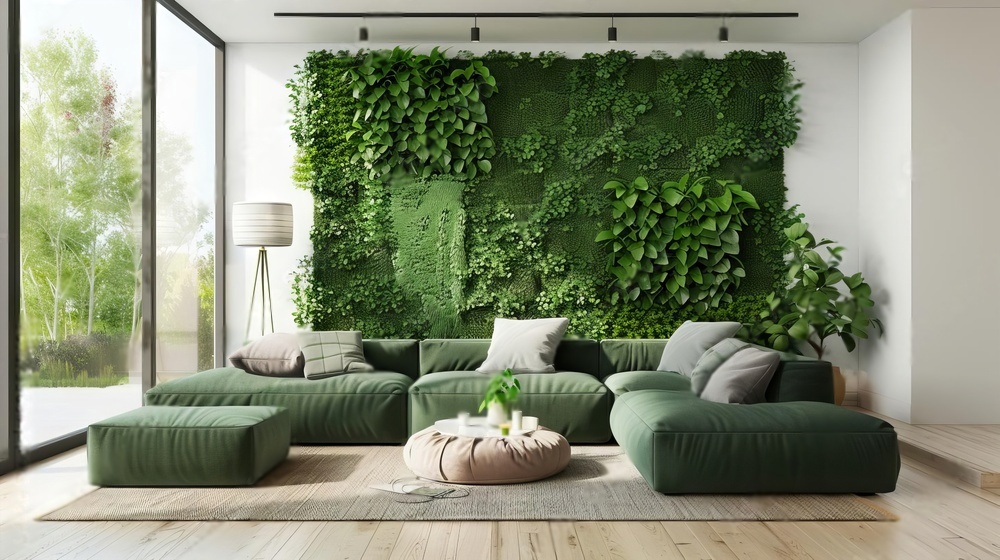
Green Living – Stylish & Sustainable Interiors
In recent years, the concept of green living has gained significant traction as more people become aware of the importance of sustainability and reducing their environmental impact. While many associate eco-friendliness with compromising style, this couldn’t be further from the truth. By making thoughtful choices and embracing sustainable interior design principles, you can create a home that is both fashionable and environmentally responsible.
One of the key aspects of green living is selecting materials and products that are sustainable and ethically sourced. When shopping for furniture, decor, and other household items, looks for pieces made from recycled, reclaimed, or renewable materials. For example, https://rythmoftheworld.com/ offers a wide range of stylish and sustainable home goods that can help you create a beautiful and eco-friendly living space.
Embrace Natural Materials
When it comes to creating a sustainable interior, natural materials are your best friend. Not only do they add warmth and texture to your space, but they also have a lower environmental impact compared to synthetic alternatives.
Wood
Wood is a versatile and renewable material that can be used for flooring, furniture, and decor. Choose responsibly sourced wood, such as bamboo or reclaimed timber, to minimize your ecological footprint. Incorporating wood elements into your home not only adds natural beauty but also helps regulate indoor humidity levels.
Natural Fibers
Opt for textiles made from natural fibers like organic cotton, linen, hemp, and wool. These materials are biodegradable and require fewer chemicals during production compared to synthetic fabrics. Natural fibers are also breathable and comfortable, making them ideal for bedding, curtains, and upholstery.
Incorporate Plants
Adding plants to your interior not only enhances the overall aesthetic but also improves air quality and promotes a sense of well-being. Indoor plants act as natural air purifiers, absorbing toxins and releasing oxygen.
Low-Maintenance Plants
If you’re new to plant parenthood, start with low-maintenance options like snake plants, pothos, or ZZ plants. These hardy species thrive in various light conditions and require minimal care, making them perfect for busy households.
Vertical Gardens
Maximize your green space by creating a vertical garden. Install wall-mounted planters or use hanging baskets to display a variety of trailing plants. Vertical gardens add a stunning visual impact while taking up minimal floor space.
Embrace Energy Efficiency
Green living extends beyond material choices; it also involves reducing your home’s energy consumption. By making smart decisions and investing in energy-efficient solutions, you can lower your utility bills and minimize your carbon footprint.
Energy-Efficient Lighting
To ensure that your home remains stylish and eco-friendly, consider browsing through https://rythmoftheworld.com/ for a carefully curated selection of sustainable decor and furniture pieces.
Programmable Thermostats
Programmable thermostats allow you to set your heating and cooling schedules according to your daily routine. By automating temperature adjustments, you can save energy without sacrificing comfort.
Upcycle and Repurpose
One of the most sustainable ways to decorate your home is by upcycling and repurposing existing items. Not only does this reduce waste, but it also adds a unique and personal touch to your interior.
Vintage and Antique Finds
Scour thrift stores, antique shops, and flea markets for one-of-a-kind pieces that can be given new life in your home. A vintage dresser can be transformed into a stylish bathroom vanity, while old window frames can be repurposed as wall art.
DIY Projects
Embrace your creativity and take on DIY projects using reclaimed materials. Transform old pallets into a rustic coffee table or turn mason jars into charming pendant lights. The possibilities are endless when you think outside the box.
Opt for Non-Toxic Finishes
When selecting paints, stains, and finishes for your home, choose non-toxic and low-VOC (volatile organic compound) options. These products emit fewer harmful chemicals, ensuring better indoor air quality and a healthier living environment.
By incorporating these sustainable interior design principles, you can create a stylish and eco-friendly home that reflects your values and contributes to a greener future. Remember, every small change counts, and by making conscious choices, you can make a significant impact on the environment without sacrificing style or comfort.
Key Takeaways:
- Choose materials and products that are sustainable and ethically sourced.
- Embrace natural materials like wood and natural fibers for a lower environmental impact.
- Incorporate plants to improve air quality and promote well-being.
- Invest in energy-efficient solutions like LED lighting and programmable thermostats.
- Upcycle and repurpose existing items to reduce waste and add a personal touch.
- Opt for non-toxic and low-VOC paints, stains, and finishes for better indoor air quality.
- Making conscious choices can create a stylish and eco-friendly home that contributes to a greener future.
For more inspiration and ideas on sustainable living, visit https://rythmoftheworld.com/, a go-to resource for those seeking to embrace a more environmentally friendly lifestyle.
How can I incorporate sustainable materials into my home decor?
To incorporate sustainable materials into your home decor, choose furniture and accessories made from recycled, reclaimed, or renewable resources. Opt for natural fibers like organic cotton, linen, hemp, and wool for textiles. Look for responsibly sourced wood, such as bamboo or reclaimed timber, for flooring and furniture.
What are some easy-to-maintain indoor plants that can improve air quality?
Some easy-to-maintain indoor plants that improve air quality include snake plants, pothos, and ZZ plants. These hardy species thrive in various light conditions and require minimal care, making them perfect for busy households. They act as natural air purifiers, absorbing toxins and releasing oxygen.
How can I reduce my home’s energy consumption while maintaining a stylish interior?
To reduce your home’s energy consumption while maintaining a stylish interior, invest in energy-efficient solutions like LED lighting and programmable thermostats. LED bulbs use less energy and last longer than traditional incandescent bulbs, while programmable thermostats allow you to automate temperature adjustments based on your daily routine.
What are some creative ways to upcycle and repurpose existing items in my home?
Some creative ways to upcycle and repurpose existing items include transforming vintage finds, such as turning an old dresser into a bathroom vanity or using window frames as wall art. Embrace DIY projects using reclaimed materials, like creating a coffee table from pallets or pendant lights from mason jars.
Why is it important to choose non-toxic and low-VOC finishes for my home?
Choosing non-toxic and low-VOC (volatile organic compound) paints, stains, and finishes is important for maintaining better indoor air quality and a healthier living environment. These products emit fewer harmful chemicals, reducing the risk of respiratory issues and other health problems associated with long-term exposure to toxic substances.

